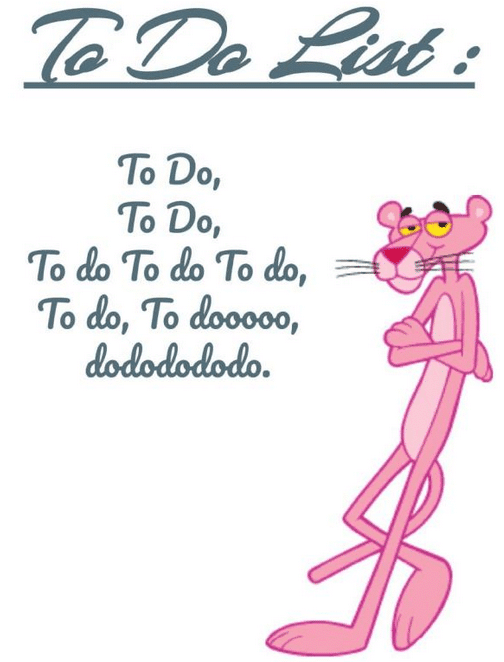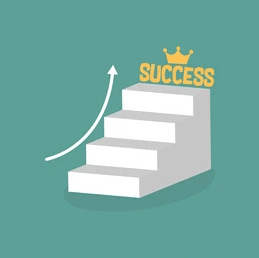Hello guys,
this is the second part of the article about productivity tips. If you want to read the 1st part then go here: How To Get Things Done – Productivity Tips Part #1
As I said the last time, I don’t have the “qualification” in this area. I am simply a guy who tries his best to get things done. I am interested in the “productivity” topic, and I am going to show you the habits I stick with and that help me every day. Here we go!
Tip #6: How To Collect Ideas
I picked this habit up from the book “Getting Things Done” by David Allen. This book is written mostly for higher management/executives but still, there are things a regular guy like me can use. This is one of them.

Does it sometimes happen to you, that you are working on something, and out of nowhere a new idea pops up? Sometimes it is not even related to the task you are just working on. This happens to me quite often.
What most people do is dismiss the idea and continue working on their current task. This is a shame because this way they lose a lot of good ideas. Or, they stop doing their current task and start exploring this new idea. This is not productive either, because shifting focus from one thing to another costs energy and in the end, they end up with no task finished.
The way I do it is that when I get a new idea, I immediately write it down. I don’t spend time thinking about whether it’s good or no. I don’t explore the idea further. I just write it down and then I continue with the current task. This allows me to focus and get things done one by one without shifting my attention.
What about the idea I wrote down? I explore it later. Maybe I discard it as a stupid idea, but maybe it turns out to be a great thing!
For collecting ideas I use Todo Cloud (https://www.todo-cloud.com). It is a simple web-based application that I can quickly access from my phone or from my computer.
For me, this is a really helpful method to collect ideas without losing any.
Tip #7: How To Use Your Diary Effectively
If you don’t have a diary, then get it. Diary helps your brain to relieve from holding all your tasks in your mind. Relieving your brain will help you to focus on the important stuff – on being productive.
I use my diary a lot, but I don’t use it the way most people do. In my diary, there are only things that are bound to a certain “fixed” date. It doesn’t contain ideas, things to do sometime in the future, or other stuff people usually write down in their diary.

It only includes tasks and information bound to a certain day. The rule is: What is written as a task for that given day must be completed on that day.
What people often do is that they write down all the things they need to do, and then they just roll them forward. They write the same tasks again and again, postponing them until the tasks are done. The downside is that all the tasks are never done and eventually, their diary just becomes a huge mess.
With my method, I use the diary only to write down the tasks that are bound by date. The other tasks (that are not bound by date) go in the Todo Cloud. Or to some other separate list or file that is created specifically for this purpose – to hold tasks and ideas that are not bound to a certain date.
BTW this is also a trick I implemented from the “Getting Things Done” book.
Tip #8: Say “NO” To Everything First
This funny little mind hack will help you to stay focused. You can implement it easily right now!
Does it sometimes happen to you that you are working on something, and suddenly out of nowhere you just need to check your email, Facebook, Instagram, …?

And before you give it any though you are on Facebook, browsing some random stuff? Or that somebody comes with some quick request and you quit your work without even thinking about it and immediately shift your attention towards that person’s needs?
What basically happens is that you say “YES” to everything. Check email – YES, check Facebook – YES, etc…
This kills your focus and lowers your productivity greatly.
A super simple hack is to always say “NO” at first. Say NO to everything! Say no to everything that comes into your mind and then think about whether you really need to do it or no. Do you really need to check your email now? Do you really need to go to Facebook now? …
If you say NO at first, then you will be able to eliminate all those quick impulse actions that kill your focus and drain your energy.
Sure, this automatic “NO” can turn into a “YES” but only after you have given it some thought. It should help you eliminate impulsive behavior and shifting your attention too quickly without any thought.
I picked this trick from one of Brendon Burchard’s videos and I use it every day. It’s a real helper! Give it a try!
Tip #9: What Is The Next Concrete Step?
This tip helps if you have a BIG project ahead of you and you have no idea how you are going to handle it.
When you have some task that is just too overwhelming, then you need to divide it into smaller tasks. This is pretty obvious right? Let me give you some more then!

How I handle big projects is that I always ask myself “What is the next concrete step I need to do”. The trick is you need to describe this next step in detail and precisely.
This will help you greatly, because you won’t feel lost in a huge project anymore. You will know what exactly is the next thing you need to do. That one concrete task.
After this is done, you repeat the process until the huge project is finished.
For me, it was for example writing my first book (Volume Profile: The Insider’s Guide To Trading). I never wrote a book before so it was a huge and overwhelming project.
My first concrete step was to do some brainstorming where I wrote down all the stuff I wanted to put in the book. Then the next step was to put it all into a logical order. The next step was to create a rough table of contents,.. and so on. I was always asking myself “What exactly is the next step?”
The most important thing is that those steps need to be as concrete as possible so you know exactly what to do. That’s the trick behind this!
A good thing is that even a lazy person can do the one concrete step if he knows what exactly it is he needs to do, right?
I hope you guys liked my productivity tips. I am not a guru on this stuff, but I do my best and what I showed you is what works for me. I would be really glad if you shared some of your tips below in the comments!
Cheers,
-Dale
This was the second part of the article about productivity tips. If you want to read the 1st part then go here: How To Get Things Done – Productivity Tips Part #1
Do you want ME to help YOU with your trading?
- Get link
- X
- Other Apps
- Get link
- X
- Other Apps
Comments
Post a Comment